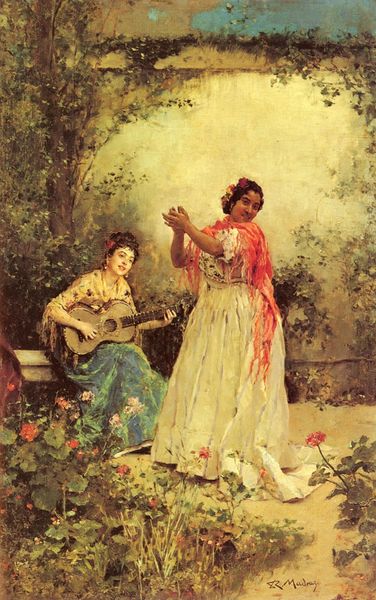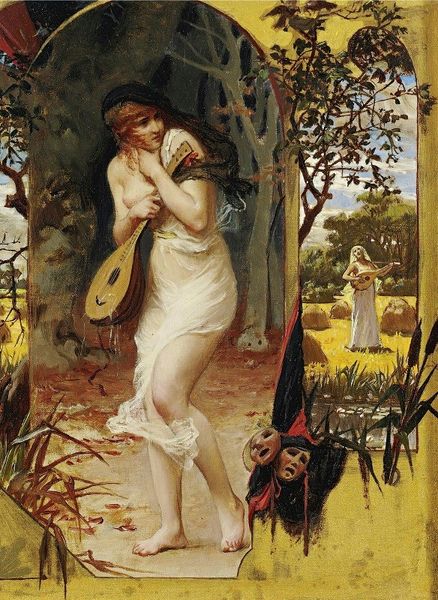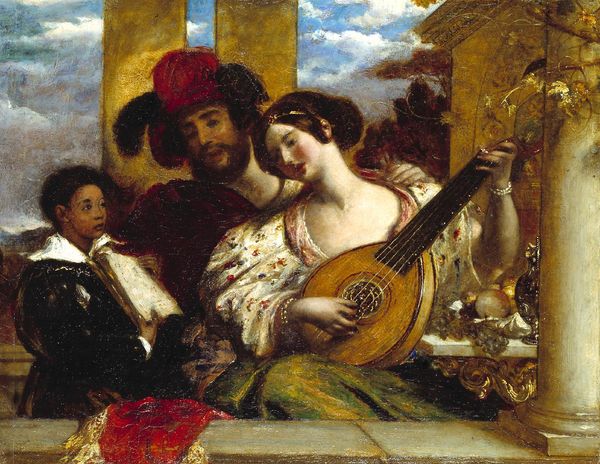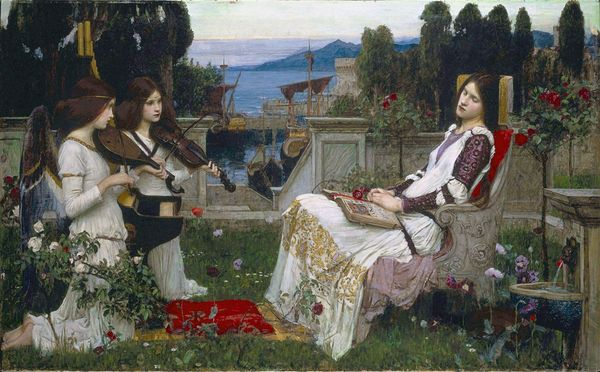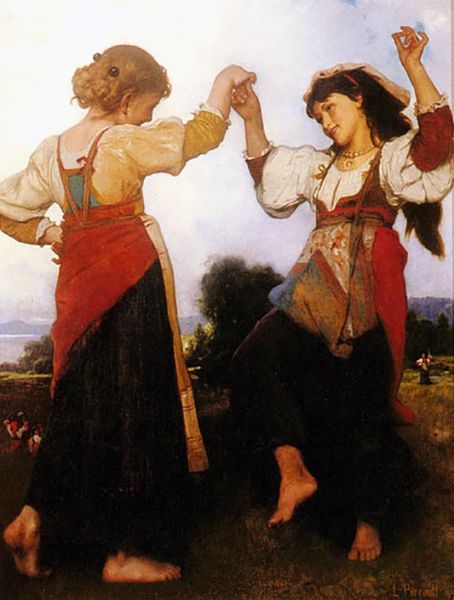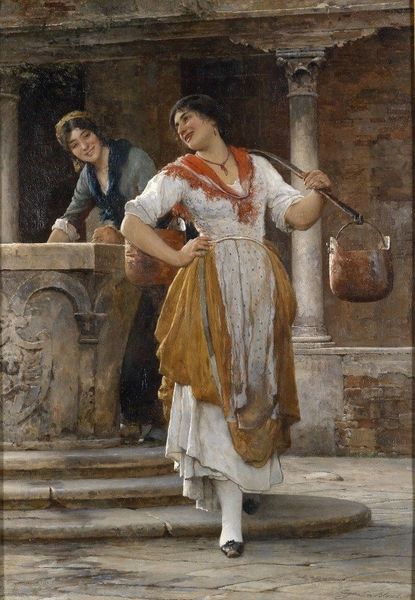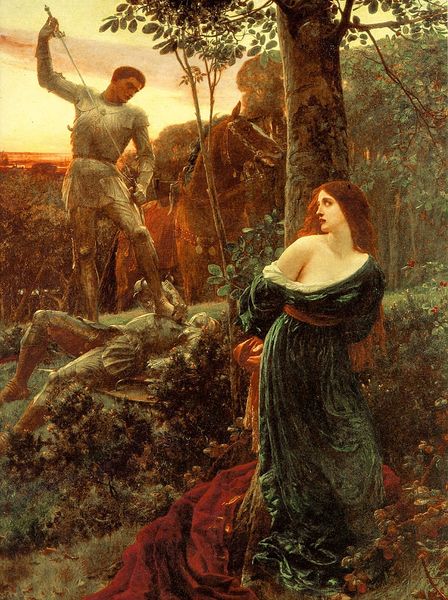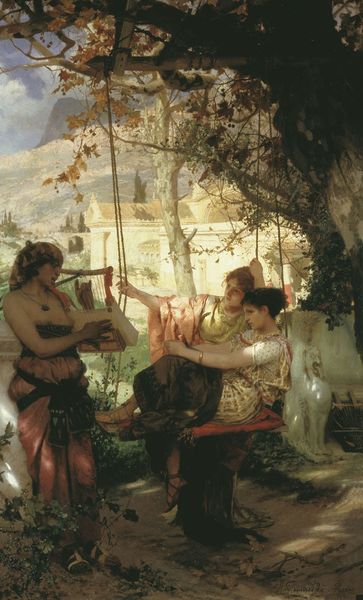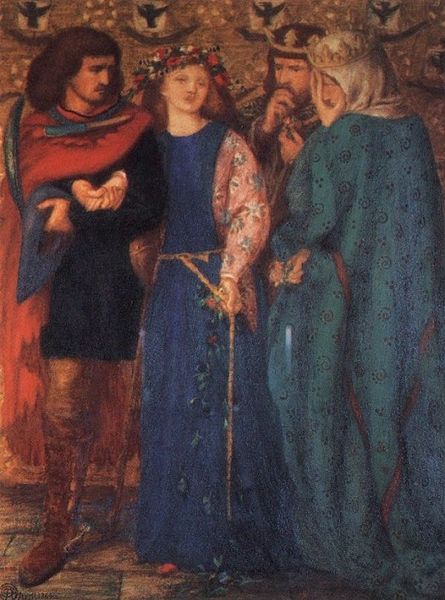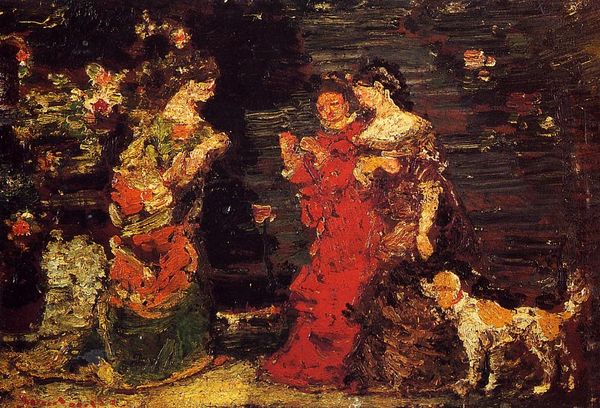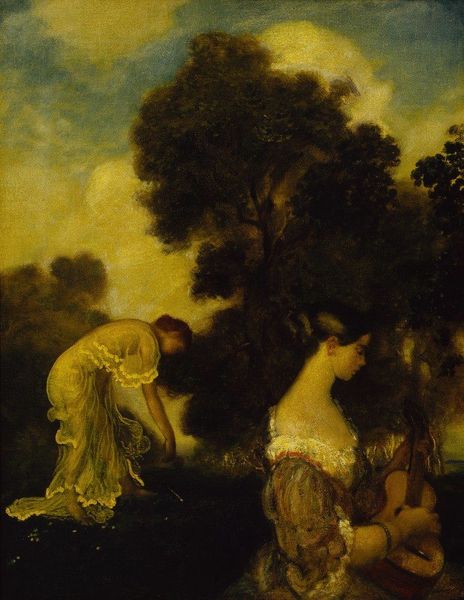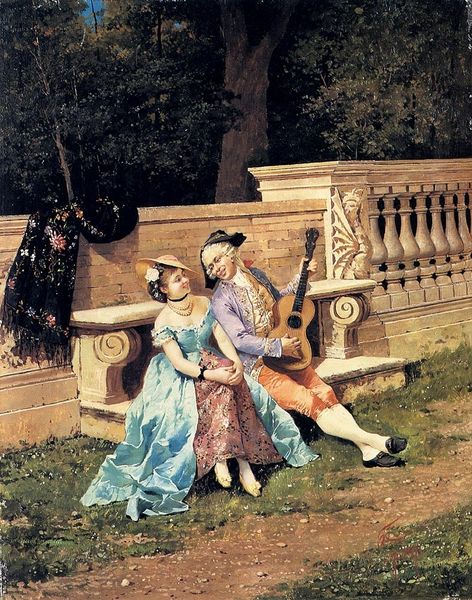
painting, oil-paint
#
surrealistic
#
painting
#
oil-paint
#
landscape
#
figuration
#
romanticism
#
surrealism
#
symbolism
#
genre-painting
#
surrealist
Copyright: Public domain
Curator: Here we have "Look any laughs to the plains" by Arnold Böcklin, executed with oil paints and indicative of both Romantic and Symbolist aesthetics. Editor: My immediate reaction is one of cool tranquility, despite the somewhat surreal setting. The color palette is very grounding, focusing on earthy tones and muted light, creating a very quiet moment. Curator: Quiet is a good descriptor. Böcklin’s manipulation of light and shadow, coupled with the composition of figures within a seemingly classical landscape, points to his meticulous layering of meanings and influences. I find myself drawn to the specific material choices in rendering their costumes—what sort of cloth and craftsmanship went into each robe, each corset? Editor: For me, it’s the deliberate juxtaposition of figures that really catches the eye. The singer with the lute evokes a sense of performance, tradition, almost a troubadour-like figure, while the woman reaching toward the flower appears almost ritualistic. Does this connect back to classical mythology? I am reminded of Persephone gathering flowers... Curator: That's certainly possible. Though undated, placing this painting firmly within the late 19th century raises questions. Where exactly was Böcklin sourcing his pigments? Who would have had access to models, such as these figures, for this style of genre painting at that moment in history? Editor: What if the act of picking that flower is symbolic of a fleeting moment of beauty, and an offering? And that grouping—almost a chorus—in the background adds to that feeling of symbolic storytelling... as if the plains laugh on regardless. Curator: Indeed, though to achieve the softness we see here, Böcklin would likely have used blending techniques requiring specific solvents, applicators, and a dedication to slow and careful execution. Editor: Böcklin's careful selection of imagery clearly elevates this into something beyond a simple genre scene, inviting us to explore broader cultural and psychological depths. Curator: Ultimately, the impact is only understood when we ask not just what is represented, but by what means, and under what historical circumstances. The creation itself is as integral to interpretation as are the myths, symbols, or stories hinted within the finished product. Editor: Yes. By acknowledging both the construction and iconography within “Look any laughs to the plains,” we gain a greater insight into Böcklin’s perspective, making it a far more intimate, albeit complex, encounter.
Comments
No comments
Be the first to comment and join the conversation on the ultimate creative platform.
